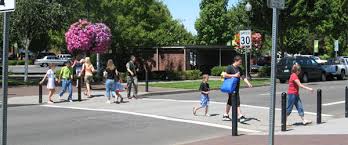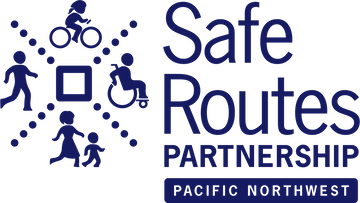In the spring of 2017, House Bill 2017 passed in the Oregon State Legislature, dedicating $10 million annually for Safe Routes to School infrastructure, increasing to $15 million annually in 2023. The purpose of the funding is to build projects with-in a one mile radius of schools to make it safer and easier for students to walk and bicycle to school. Following HB 2017, the Oregon Department of Transportation formed a Rulemaking Advisory Committee (RAC) to amend the Oregon Safe Routes to School Rule. The purpose of the committee is to align the rule with new funding made available by recent state legislation, and consider how infrastructure funding for Safe Routes to School projects should be structured.

What the rulemaking committee is working on
It's important to note that HB2017 requires a 40% cash match for eligible projects. This may be reduced to 20% for projects near Title I schools, in School Safety Corridors, or in Small Communities.
The RAC is tasked with considering on-going oversight process and eligibility for funding, and currently is considering program definitions, including:
- Title I school
- What is a "Plan"
- School Safety Corridor
- Small Communities
- Cash Match
Additionally, the RAC is discussing program design options, overarching funding targets for social equity and rural communities to guide the allocation of funds, and a 1% fund for administrative costs and technical assistance.
- Program Design Option 1: funding shared among three programs
- Competitive: The majority of funds set aside for a competitive program that cities, counties, transit agencies and tribes could apply for. ODOT would not be eligible to apply. Advisory Committee sets criteria and makes project recommendations.
- ODOT: A portion of funds set aside for an ODOT discretionary program. Advisory Committee sets criteria and is kept informed of the project selection.
- Rapid Response: A small portions of funds set aside for urgent needs to systemic safety issues. Advisory Committee sets criteria and makes project recommendations.
- Program Design Option 2: funding shared among two programs
- Competitive Program: The majority of funds set aside for a competitive program that ODOT, cities, counties, transit agencies and tribes could apply for. Advisory Committee sets criteria and makes project recommendations.
- Rapid Response: A small portion of funds set aside for urgent needs to systemic safety issues. Advisory Committee sets criteria and makes project recommendations.
What are your thoughts?
We want to hear from you! If you work for a public agency, do either of these program design options work for you? What are your thoughts on what kind of plan should be eligible? What is your agency's reaction to the 40% cash match requirement? What's missing? What sounds great? If you have ideas for how the Safe Routes to School Infrastructure program should be set up to reach the most students needing safety improvements, please send them to Kari Schlosshauer, who will share back to the committee at the upcoming Feb 13 meeting. We welcome comments on any aspects of the program.
Additionally, all RAC meetings are open to the public and have options for public testimony, and there will be a 21 day minimum public comment period and three public hearings after the draft Rules are released in spring 2018.


